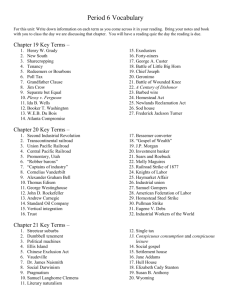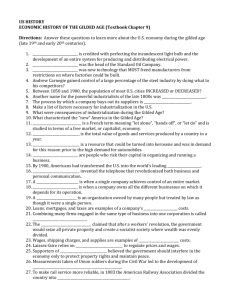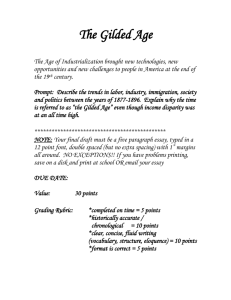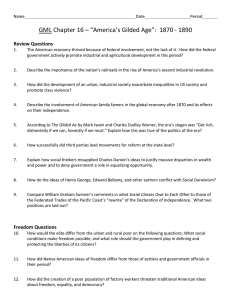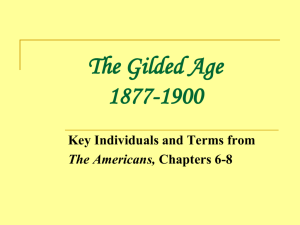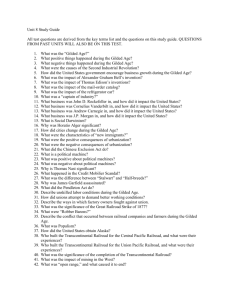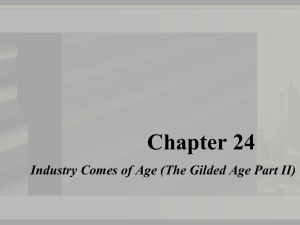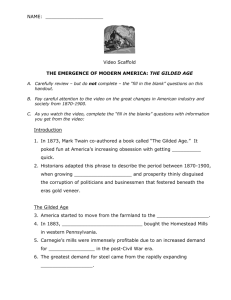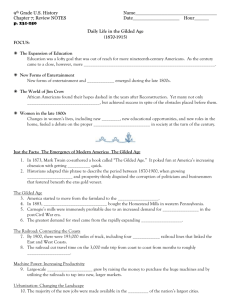AP US HISTORY UNIT 8 GUIDE Covering Pageant Chapters 23-25
advertisement
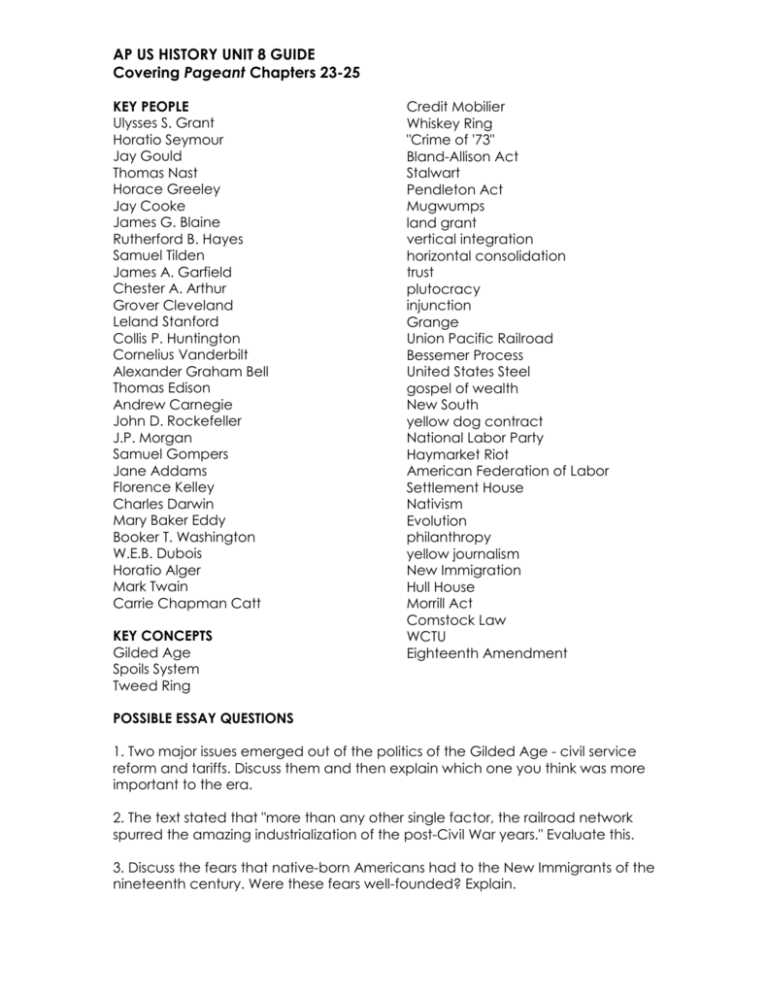
AP US HISTORY UNIT 8 GUIDE Covering Pageant Chapters 23-25 KEY PEOPLE Ulysses S. Grant Horatio Seymour Jay Gould Thomas Nast Horace Greeley Jay Cooke James G. Blaine Rutherford B. Hayes Samuel Tilden James A. Garfield Chester A. Arthur Grover Cleveland Leland Stanford Collis P. Huntington Cornelius Vanderbilt Alexander Graham Bell Thomas Edison Andrew Carnegie John D. Rockefeller J.P. Morgan Samuel Gompers Jane Addams Florence Kelley Charles Darwin Mary Baker Eddy Booker T. Washington W.E.B. Dubois Horatio Alger Mark Twain Carrie Chapman Catt KEY CONCEPTS Gilded Age Spoils System Tweed Ring Credit Mobilier Whiskey Ring "Crime of '73" Bland-Allison Act Stalwart Pendleton Act Mugwumps land grant vertical integration horizontal consolidation trust plutocracy injunction Grange Union Pacific Railroad Bessemer Process United States Steel gospel of wealth New South yellow dog contract National Labor Party Haymarket Riot American Federation of Labor Settlement House Nativism Evolution philanthropy yellow journalism New Immigration Hull House Morrill Act Comstock Law WCTU Eighteenth Amendment POSSIBLE ESSAY QUESTIONS 1. Two major issues emerged out of the politics of the Gilded Age - civil service reform and tariffs. Discuss them and then explain which one you think was more important to the era. 2. The text stated that "more than any other single factor, the railroad network spurred the amazing industrialization of the post-Civil War years." Evaluate this. 3. Discuss the fears that native-born Americans had to the New Immigrants of the nineteenth century. Were these fears well-founded? Explain.

